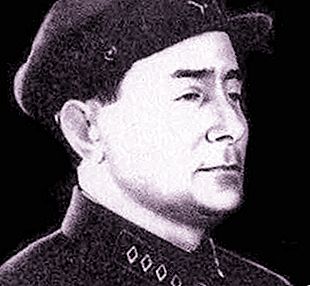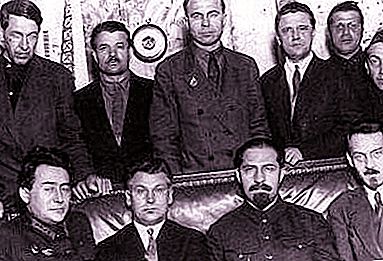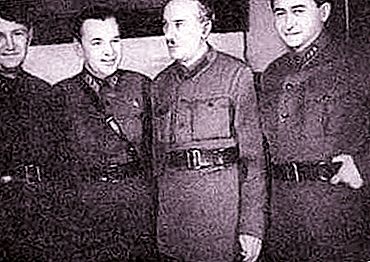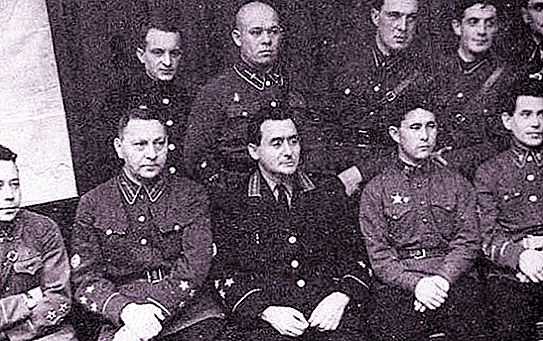History knows hundreds of examples when an executioner became a victim. Especially many such cases occurred during the years of Stalin's repressions, when, by any denunciation, it was possible to lose not only freedom but also life.
Among those who managed to visit both sides are Agranov (Granov) Yakov Saulovich (Yankel Shmaevich Sorenson). Having made a dizzying career and having earned the title of executioner of the Russian intelligentsia among the people, he ended his life at a firing range and was never rehabilitated.
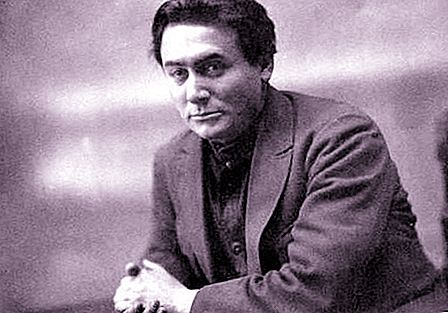
Yakov Saulovich Agranov: biography (young years)
The future ruthless Chekist was born in 1893 in the town of Chechersk, located on the territory of the former Mogilev province, in a rather prosperous family of Jewish merchants named Sorenson, although he indicated in the documents that he was of proletarian origin. He graduated from the 4th grade of the city school.
At the age of 19, Yakov Sorenson joined the RPS and, working as a clerk at the Levin warehouse in Gomel, conducted revolutionary activities.
He took the pseudonym Agranov, according to some versions in memory of the 17-year-old Jewish youth from Gomel, who died during revolutionary actions in 1905.
He did not get to the front, as he was declared unfit due to epilepsy.
Active revolutionary activity
In 1915, Agranov Yakov Saulovich was arrested. He was exiled to the Yenisei province, where he met his future victim - L. B. Kamenev and I. V. Stalin. As a result, a coup took place in the political views of the future Chekist, and he became a member of the RSDLP.
After the 1917 revolution, Agranov was appointed secretary of the Polessky regional committee of the Bolshevik party, and a little later - secretary of the Council of People's Commissars of the RSFSR.
Work in the Cheka
In the spring of 1919, Agranov Ya. S. was sent by the party to work in the Cheka. A truly dizzying career awaited him there. So, at first he was appointed Special Commissioner of the Special Department, and three years later - the Commissioner of the Secret Operations Directorate and Secretary of the Small Council of People's Commissars. In these positions, Yakov Agranov was instructed to lead the investigation in the case of the organizers of the Kronstadt, peasant uprising Antonov and several others. In addition, he personally was ordered by V. Lenin and F. Dzerzhinsky to compile lists of persons who were to be expelled from the country.
Tagantsev case
In 1921, under the leadership of Agranov, materials were fabricated that were used during a high-profile trial of members of the Petrograd Military Organization. Later it became known as the case of Tagantsev, named after the “leader” of the conspirators. This courageous man - a professor of geography - sold personal items to help those fleeing abroad to members of the intelligentsia over whom the "sword of justice" was carried. Information about the behavior of the professor was in the Cheka.
The arrested Tagantsev steadfastly remained silent for 45 days, until Agranov intervened in the matter. He promised and even issued a receipt to the scientist (!) That no one would be shot. The unfortunate Tagantsev signed all the papers that the "good" investigator gave him.
Among them was a document stating that the poet Lev Gumilyov was the leader of a group of intellectuals who “agreed to go out” in the event of an uprising.
As a result, the poet, as well as more than 60 people were arrested and sentenced to death.
At the same time, Yakov Saulovich Agranov said that he allegedly interceded for Gumilyov, but could not convince the authorities.
Further career
In 1923, Agranov Yakov Saulovich was appointed to the post of deputy chief, and after 6 years - to the post of head of the Secret Department of the OGPU. In this post, he was engaged in the “curation” of the intelligentsia and was on friendly terms with L. Averbakh, V. Mayakovsky and B. Pilnyak.
In September 1931, Agranov was appointed to the post of political representative of the OGPU of the USSR in the metropolitan region, and in early 1933 - to the post of deputy chairman of this department.
Work in the NKVD
In 1934, by merging several departments, the People's Commissariat of Internal Affairs of the USSR was organized. Agranov Yakov Saulovich was appointed to the post of the first deputy commissar of internal affairs of the USSR. Thus, he became a direct subordinate of G. Yagoda. Moreover, in fact, it was he who directed the functioning of all the operational departments of the State Security Department of the NKVD of the Soviet Union.
Dangerous games
State Security Commissioner Yakov Saulovich Agranov at the end of 1934 led the investigation into the murder of S. Kirov. In addition, he was appointed acting head of the NKVD Directorate of the Leningrad Region. During this period, together with N. Yezhov and G. Yagoda, he was involved in organizing the process of his ex-comrade by reference L. Kamenev and G. Zinoviev.
At the same time, Agranov actively participated in a conspiracy against his boss. In particular, according to historians, he, together with Yezhov, tried to remove Yagoda, who did not see any connection in Kirov’s murder with the activities of the opposition.
End of career
At the end of 1936, Agranov Yakov Saulovich was appointed head of the GUGB NKVD of the Soviet Union. In this position, he took part in the preparation of the trial in the case of M. Ryutin and other members of his group.
However, already in the spring of 1937 Agranov was demoted to the head of the fourth department of the GUGB, and on May 17 of the same year they were removed from these posts and appointed head of the NKVD Directorate in Saratov.
Being far from the capital, he wrote a letter to Stalin proposing the arrest of N. Krupskaya and Malenkov, who at that time were heads of departments of the Central Committee of the CPSU.
His bold step had the opposite effect. The leader of all peoples did not like the excessive initiative of Agranov. In July 1937 he was expelled from the party, and then arrested. The execution took place 11 months later by the verdict of the Supreme Court. Almost simultaneously with him, his wife V.A. Agranova was convicted and executed.

